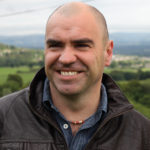Marcelo Papa is a winemaker at Concha y Toro, the largest winery in Chile. He is responsible for more than 16 million bottles of Casillero del Diablo and two million bottles of Marqués de Casa Concha.
In 2010, Papa selected a block of cabernet sauvignon from the firm’s top vineyard in Alto Maipo, and harvested it a month earlier than the rest of the vines. After fermentation, he aged it for two years in very old barrels. The Marqués de Casa Concha Edición Limitada tastes like pure cabernet, the kind of Andean red Papa thinks of as a wine of the 1970s, before the Chileans had reached out to conquer the world market.
In a sense, it’s a wine with its back to the market, something you don’t see very often from Chile. Since the 1980s, Chilean wine companies have pushed exports by demanding that their winemakers produce styles to please international taste. By accommodating the market, Chile’s wine industry has grown to more than $1.4 billion in sales, and more than 250,000 acres of vineyards, similar to the surface area of Bordeaux.
But it was only a matter of time before the winemakers themselves began to experiment, ignoring the sales and marketing teams and the CEOs’ focus on sales volume and price per case, to create wines like Papa’s Edición Limitada Cabernet, or Tara from Ventisquero, a cloudy white wine that would be at home in a tasting of the most radical “natural” wines of Italy and France.
Perhaps even more remarkable is the number of small producers that are emerging, growers and winemakers whose primary goal is to interpret an idea or a place…and then hope that, perhaps, people will like it, though that is not what drives them.
Some of them have been inspired by French partners; others have been seduced by a vineyard; a surprising number are working to rescue the mission grape by resurrecting the pipeño, the sort of “natural” wine made by Chilean campesinos centuries before cabernet or carmenère arrived in the country.
Here are some of the players creating a completely different Chilean wine scene.
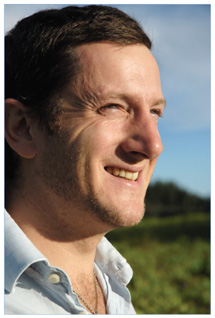

Most winemakers in Chile don’t have many kind words about país. This grape, brought by the first Spanish conquistadors, was the basis of Chilean wine until the middle of the 19th century, when producers began to import French vines. Then país fell into oblivion, relegated to local wines and home winemakers.
And it remained a lost cause until a Frenchman arrived in the Maule Valley and began to consider the potential of those ancient vines. In 2007, Louis-Antoine Luyt made his first país, the Clos Ouvert Uva Huasa, a simple, fruity red with the variety’s earthy flavors—in this case, remarkably juicy and fresh.
Although most people in Chile were circumspect about the future of país, Luyt was intrigued by this first harvest. He dedicated his time to exploring the dry-farmed vineyards of Maule, some of them virtually abandoned. Marcel Lapierre, the famed Beaujolais producer, accompanied Luyt on one of his tours of the back roads of the south coast. Lapierre shared Luyt’s enthusiasm and they decided to produce a wine together, a país made with carbonic maceration that they called El País de Quenehueao.
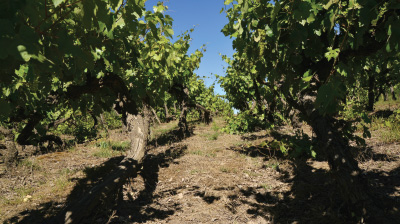

Though Lapierre passed away in 2010, Luyt has continued to delve into país, purchasing grapes from vineyards in places long forgotten by modern Chilean viticulture.
Today old-vine país has a certain cachet, and several larger producers have added it to their portfolios (Concha y Toro just launched a país under its Frontera label). But more significantly, Luyt has influenced a new community of small producers who have taken país in unusual directions, helping to create the new face of Chilean wine.
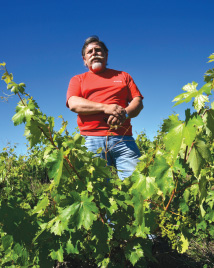

Manuel Moraga, who studied forestry, has farmed the vineyard for a quarter century: 30 acres of país (the original mission grape) along with some malbec in the midst of poplars, acacias and oaks. The volcanic hills surrounding the vineyards are planted mostly to cornfields and vegetable gardens.
Until recently, Moraga sold wine in bulk or simply sold the grapes, but in 2010, he decided to start bottling his own wines under the label Cacique Maravilla.
Moraga works traditionally, using only sulfur treatments in the vineyard (he has never irrigated) and fermenting the wine in an old cement lagar. He used to age his wines in old foudres, but the earthquake of 2010 destroyed them all. Now he leaves the wines for a short time in fiberglass vats before bottling. He calls his wines pipe&ntide;os, an old name for the low-intervention wine Chilean campesinos used to make from local grapes. Of his four red wines, his Pipeño Bordeaux (a co-fermentation of país, malbec and some cabernet sauvignon planted 20 years ago) is the most successful, a soft, juicy red with the earthy flavors of país perfumed with scents of flowers and spice. It’s one of those wines you might drink so quickly that you’ll immediately want to open another bottle.
Maitía
It comes in a 1.5-liter bottle, but the contents are not intended for cellaring. Loreto Garau and her husband, David Marcel, might have chosen the bigger size because a normal bottle would not be enough. Their red wine drinks like water.
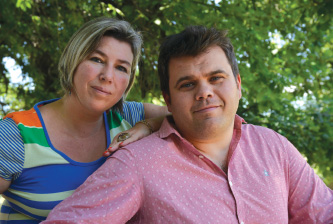

Garau is Chilean; she runs Petit Plaisirs in Santiago, a shop specializing in selections from small wineries. Marcel had been a wine grower in France’s Basque country. They met in Chile, and after trips back and forth to France, they decided to settle in Chile in 2007. Garau opened her shop, while Marcel brokered grapes and wines in Chile. “Our customers in the shop kept asking us when we were going to make our own wine,” Marcel told me after bottling their first release: 6,000 magnums of Maitía 2012 Aupa, a wine based on old-vine carignan and país, along with some cabernet franc, all of it grown in the Maule Valley.
They set out to make a simple, easy-drinking red, using carbonic maceration for half of the lots “to emphasize the fruity side of the grapes,” Marcel says, “but without exaggerating that.” It’s a pure expression of red fruit, with enough structure to accompany sausages or anything else off the grill.
Aupa, says Marcel, is meant to be a pipeño, artisanally made and typically based on país. “The pipeño has bad image in Chile, as the wine for getting drunk. But what excited us about pipeños—and what excites a lot of people—is the return to drinking something simple, without anything artificial or tricked out.” Until recently, Aupa’s style of wine simply did not exist in the market. Thanks to Maitía and other wineries, the pipeño in particular, and that style of wine in general, has begun to gain recognition.
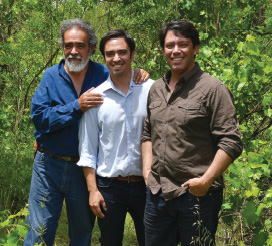

Their winemaking was pretty rudimentary, but they liked the results. So they decided: If the wine was good, why change it? “We believe that the main thing is to respect the balance these vines have achieved,” says Villalobos. “The way the vines grow lends character to our wine. We use native yeasts, age the wine in old casks and add only a minimal amount of sulfur at bottling.”
Originally, carignan had been imported to Chile to lend color and body to país, but the carignan at the Villalobos’s vineyard makes a wine that looks pink. Its fruity and floral intensity is delicious, as are its meaty flavors and juicy acidity.
The first commercial release of Viñedo Salvaje was the 2009. Since then, the production has remained small—in 2012, they produced a total of 7,400 bottles. “We believe in sustainable growth and that the wines are part of our family’s work,” says Villalobos. “We didn’t go into it to make a profit.”


He’s one of four friends involved in the project; the others include winemaker François Massoc (Aristos, Calyptra), Francisco Leyton (in charge of viticulture and exports) and Albert Cussen (who handles the finances).
The focus is on chardonnay and pinot noir, “which is basically what Massoc and I studied in France,” says Parra. Their Locura 1 Chardonnay comes from vineyards in the mountains of Alto Cachapoal—it’s juicy, dry and refreshing.
They also produce wines from old vines in the south of Chile where they grew up—in Cauquenes, Arauco and San Rosendo—like Cauquenina, a blend of país, malbec, carignan, carmenère and syrah from vineyards in Itata and Cauquenes. The old, dry-farmed vines provide an earthy wine with meaty scents and a lot of personality.
Currently, Clos des Fous produces 144,000 bottles and the partners hope to grow to 240,000. “We don’t think of this as a factory,” Parra says. Rather, the project is driven by experimentation, playing with the diversity of soils and topographies that Chile has to offer.
Parra and Massoc are also partners in a venture with Louis-Michel Liger-Belair, who makes his family’s wines at the Château de Vosne-Romanée. Massoc and Ligier-Belair had studied together at the University of Beaune and, years later, found themselves walking through the vineyards of Vosne-Romanée talking about Chile. They decided to start a small project, one that would search for an identity in Chilean wines.


Their original idea was to make pinot noir in Chile, but they soon realized that the plant material available was not the best, so they began with chardonnay and cabernet sauvignon. Meanwhile, they planted ten acres of pinot noir clones on schist soils in the south coast of Chile, near the Bío Bío River.
While waiting for these vines to mature, they are buying in areas that Parra and his partners find interesting. Duquesa, for example, is a chardonnay from Alto Cachapoal. The vineyard, planted 20 years ago, grows on volcanic soils, but Parra thinks the layer of calcareous gravel makes it unusual (he calls it “really weird”). The subtle minerality of the wine shows in its stony aroma, while an imposing structure pervades all the flavors.
Duque, a cabernet sauvignon, grows in the same region, but higher, in what Parra calls “muy Alto Cachapoal.” The vineyard is literally surrounded by mountains, at 3,000 feet above sea level, where the soil is calcareous gravel. The fresh character of the wine is especially apparent in a cool vintage like 2008, which produced an elegant wine with a strong personality.
This story was featured in W&S February 2014.
photo of Sergio Exzequiel by Pérez Ramírez
is the author of Descorchados, an annual guide to the wines of South America, and covers Chile for W&S.
This story appears in the print issue of February 2014.
Like what you read? Subscribe today.

